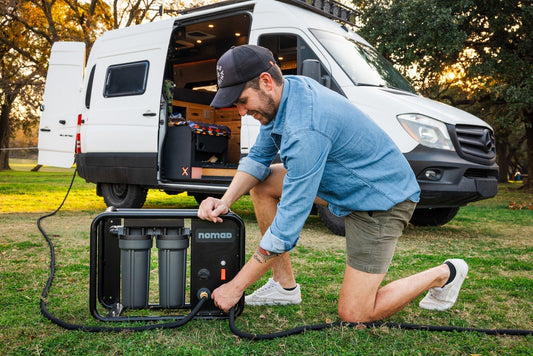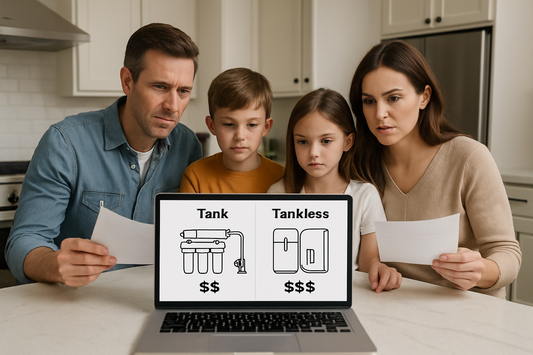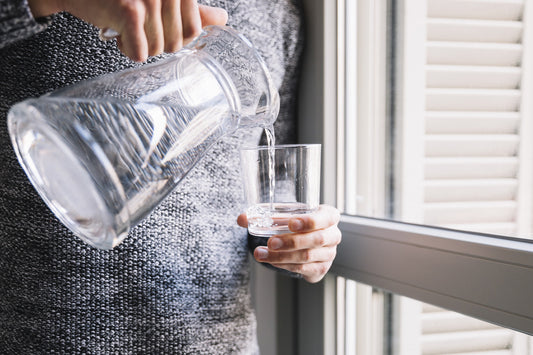Turning on your tap to find cloudy, gritty water is frustrating—but it's a clear sign your well water sediment filter needs attention. The solution depends on three key factors: your current filter type, water usage, and sediment load. Most homeowners need filter replacements every 3-6 months, but choosing the wrong micron rating or filter type can leave you with continued water quality issues and potential plumbing damage.
Why Well Water Gets Cloudy (And What's Really in There)
Well water naturally picks up sediments as it travels through soil and rock layers. The most common culprits include sand, silt, clay particles, and dissolved minerals like iron and manganese. These aren't just aesthetic problems—they create real issues for your home's plumbing system and appliances.
When sediments accumulate in your pipes, they cause reduced water flow, increased pressure on plumbing joints, and premature wear on appliances like washing machines and water heaters. A quality sediment filter for well water acts as your first line of defense, trapping these particles before they enter your home's water system.
Types of Well Water Sediment Filters: Which One Do You Need?
Spin-Down Filters: Visual Monitoring Made Easy
Spin-down filters excel at catching larger particles like sand and rust flakes. Their clear housing lets you see exactly what's being filtered out, making maintenance timing obvious. These work best as pre-filters before your main filtration system.
Cartridge-Based Filters: Versatile Protection
Polypropylene Filters These workhorse filters trap particles throughout their entire depth, making them highly effective for moderate sediment loads. Once saturated, they require complete replacement—typically every 3-4 months for average households.
Pleated Filters The sustainable choice for environmentally conscious homeowners. Pleated designs offer more surface area and can be cleaned and reused multiple times before replacement. Their extended lifespan makes them cost-effective for high-usage homes.
Gradient Filters These precision filters use layered filtration—coarse mesh outside, progressively finer layers toward the center. This design prevents premature clogging while maintaining consistent water pressure and extending filter life.
Choosing the Right Filter Size and Micron Rating
Understanding Micron Ratings for Well Water
Micron ratings indicate the smallest particle size a filter can capture. For well water sediment filter applications:
- 20-50 microns: Best for heavy sand and large particles
- 5-10 microns: Ideal for most residential well water systems
- 1-5 microns: Necessary for fine silt and clay particles
Filter Size Considerations
Your household's water consumption determines the optimal filter size. A 10-inch filter handles typical family usage, while larger homes or high-demand situations benefit from Big Blue filter systems that reduce maintenance frequency.
Step-by-Step Filter Replacement Process
Before You Start
Turn off your main water supply and drain the system by opening faucets throughout your home. This prevents water damage and makes the replacement process cleaner and safer.

Image by hryshchyshen
Installation Steps
- Remove the old filter housing using the provided wrench
- Clean the housing thoroughly to remove any sediment buildup
- Install the new filter cartridge ensuring proper seating
- Reassemble the housing with new O-rings if provided
- Gradually restore water pressure while checking for leaks
Signs Your Filter Needs Immediate Replacement
Watch for these clear indicators:
- Noticeable drop in water pressure throughout your home
- Return of cloudiness or unusual taste in your water
- Visible sediment in toilet tanks or clear containers
- Increased noise from appliances like dishwashers or washing machines
Regular monitoring prevents these issues from affecting your daily routine and protects your plumbing investment.
Advanced Filtration Solutions
Dual-Stage Systems
For challenging well water conditions, combining a sediment filter for well water with carbon filtration addresses both particles and chemical contaminants. This comprehensive approach ensures better taste, odor control, and overall water quality.

Image by evprokrey
UV Integration for Complete Protection
Adding UV sterilization after sediment filtration provides protection against bacteria and other microorganisms common in well water systems. This combination offers peace of mind for families relying on private well water.
Cost-Effective Filter Maintenance
Replacement vs. Cleaning
Understand when to clean versus replace your filters. Pleated filters can often be cleaned 3-4 times before requiring replacement, while polypropylene filters need complete replacement once saturated.
Long-Term Investment Benefits
Quality sediment filtration protects expensive appliances and plumbing fixtures. The cost of regular filter maintenance is minimal compared to premature appliance replacement or plumbing repairs caused by sediment damage.
While traditional options like Pelican systems remain popular references in the industry, many homeowners are discovering that Crystal Quest whole house filtration systems offer superior performance and easier maintenance for modern well water challenges.

Frequently Asked Questions
How often should I replace my well water sediment filter?
Most residential filters need replacement every 3-6 months, but this varies based on your water's sediment load and household usage. Monitor water pressure and clarity as better indicators than strict timelines.
What micron rating works best for typical well water?
A 5-micron filter provides the ideal balance between effective filtration and good water flow for most well water systems. Adjust higher or lower based on your specific sediment types.
Can I clean and reuse sediment filters?
Pleated filters can be cleaned and reused multiple times, making them environmentally friendly and cost-effective. Polypropylene filters require complete replacement once they become saturated with particles.
Why does my water pressure drop after installing a new filter?
New filters sometimes require a brief break-in period. If pressure remains low after 24 hours, check that the filter is properly seated or consider a filter with higher flow capacity for your usage needs.






